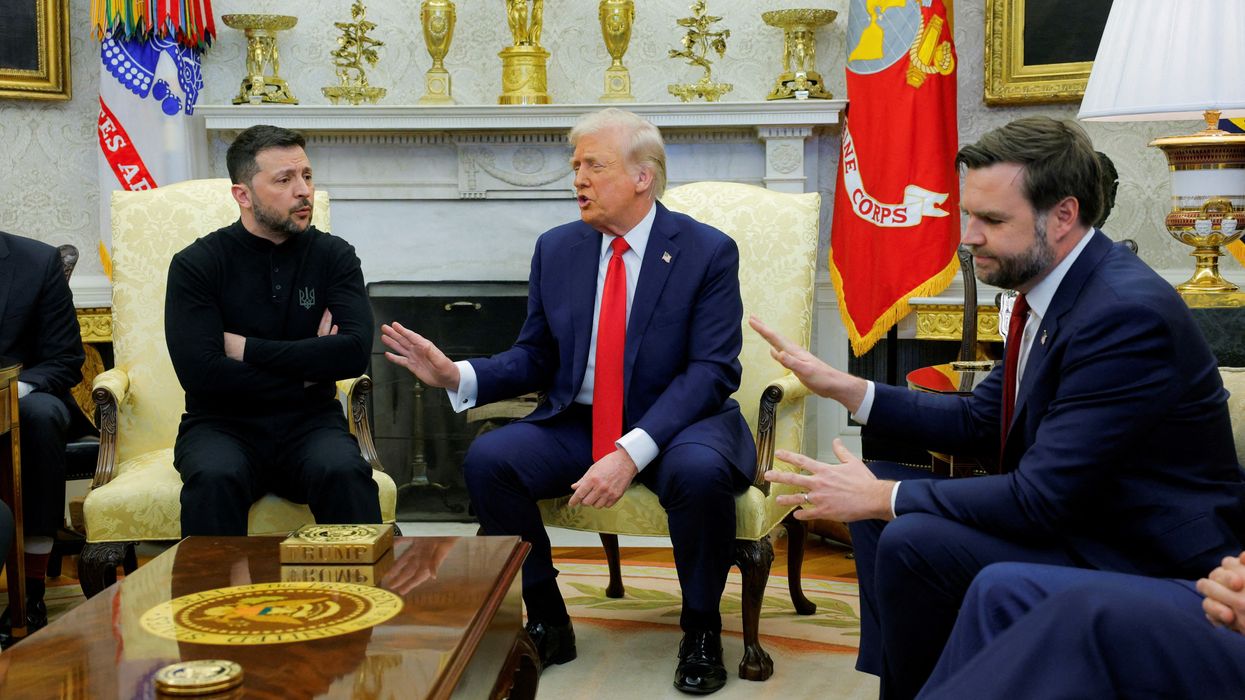The concern of nuclear catastrophe feels somewhat less imminent than it did last January, given, for example, the previous president’s reported desire to nuke a hurricane.
But President Biden’s initial support for a new nuclear weapon, the sea-launched cruise missile, only recently revived by the Trump administration, has confused experts and other observers. Only last year while campaigning for president, Biden said the United States “does not need new nuclear weapons” and that its current arsenal, which includes land, air, and sea-based nuclear weapons, “is sufficient to meet our deterrence and alliance requirements.”
The Nuclear Posture Review has been released by each new presidential administration since 1992. It outlines the president’s nuclear policy goals and plans during their time in office. NPRs are meant to explain the “rationales behind its nuclear strategy, doctrine, and requested forces.” This is why many were alarmed when President Trump’s NPR reportedly perceived a “rapidly deteriorating threat environment” and expressed a wish to expand “the use of circumstances in which the United States would consider employing nuclear weapons.” This was coupled with the call for new nuclear weapons, a reverse in course from previous administrations’ de-escalation efforts, and the first new nuclear weapon since the Cold War.
A result of Trump’s NPR and the administration’s perception of threats abroad was the revival of sea-launched cruise missiles, or SLCM’s. These are weapons that have long been deemed unnecessary. They were taken off patrol at the end of the Cold War by the Bush administration and officially retired in Obama’s 2010 Nuclear Posture Review, which identified their redundancy and noted that “deterrence and assurance roles of TLAMN (SLCM) can be adequately substituted by...other means.”
This begged the question, what purpose do SLCMs serve now versus when they were retired a mere decade ago? And the answers aren’t all that compelling. Trump claimed they were needed in order to pressure Russia into complying with the Intermediate-Range Nuclear Forces Treaty (which Trump himself ultimately withdrew from). Further, they would also apparently be used as a nuclear bargaining chip to pressure Russia to decrease its non-strategic weapons, even though SLCMs would expand the stockpile of U.S. non-strategic weapons. They would also provide a “needed non-strategic regional presence” and “an assured response capability” despite the United States already having both, making SLCMs redundant.
Redundancy isn’t the only problem with these weapons though; their revival would create complications diplomatically and in terms of conflict response. Adding SLCMs to ships or submarines may alarm some U.S. allies who wouldn’t want ships with nuclear weapons in their waters. Others may bar access to ports the ships or submarines rely on for fueling simply because they are armed with nuclear weapons.
Adding a nuclear sea-launched cruise missile to a ship or submarine would limit the amount of conventional non-nuclear weapons it would be able to carry, in effect doing the opposite of making our forces stronger. If a goal of SLCMs is deterrence, meaning, they are not meant to actually be fired, a ship or submarine now has a reduced number of weapons it can actually use in conflict. That is, without initiating nuclear war.
However, even if a conventional (non-nuclear) weapon is launched from a ship with SLCMs, the chances of nuclear conflict are high. It would be impossible for the target to determine whether the weapon headed towards them was nuclear. This opens the possibility of nuclear retaliation even though a conventional weapon was launched.
Thus, as an unnecessary, dangerous, and redundant weapon, Biden's decision to include $15.2 million in funding for the sea-launched cruise missile in his preliminary FY22 budget was unexpected, particularly given what he said on the campaign trail. As Monica Montgomery, a research analyst at the Center for Arms Control and Non-Proliferation, stated it was “surprising and troubling.” Senator Chris Van Hollen and Representative Joe Courtney released Senate and House companion bills prohibiting such funding for FY22 and years after. Opposition also came, somewhat unexpectedly, from acting Navy Secretary Thomas Harker who included SLCMs in a memo as programs to cut.
Unfortunately, neither the bills nor the memo went anywhere. The Senate and House bills have just 10 and 15 co-sponsors respectively. And after great backlash from Republican lawmakers and Navy officials, Harker modified his statement, saying he hadn’t cancelled the program but instead made a recommendation for FY2023 and was waiting on “further guidance from the nuclear posture review.”
The Nuclear Posture Review is likely to be the determining factor in the future or lack thereof of funding for the nuclear sea-launched cruise missile. Both the House and the Senate have released their versions of the Energy and Water Appropriation bills, the legislation that could grant SLCM funding. There is a key difference between the two released bills though that will likely yield decision-making power to Biden’s Nuclear Posture Review. In the House version, funding for SLCM is eliminated. The Senate version includes funding with a critical asterisk: “after consultation with the Department of Defense, [the Administrator] is directed to certify to the committees on appropriations that there are operational requirements justifying these programs.” If they aren’t justified, they won’t move forward with funding SLCM.
When the House and Senate Energy and Water leadership meet to hammer out the differences between their bills, it is unlikely a compromise favoring the full elimination of funding for SLCM will be reached. Here’s where the Nuclear Posture Review comes into play. While Congress is looking towards the Pentagon for guidance on SLCM, DoD will simultaneously be working with Biden to write his Nuclear Posture Review. The NPR will therefore almost directly inform funding for SLCM. This gives Biden the immediate capability to shape his Department of Defense by re-retiring the sea-launched cruise missile. A decision that would differentiate and distance himself from Trump’s questionable nuclear policy and better reflect the leadership Biden promised before his election.
In 2017 Biden said, “If future budgets reverse the choices we’ve made, and pour additional money into a nuclear buildup, it harkens back to the Cold War and will do nothing to increase the day-to-day security of the United States or our allies.” Now, with his Nuclear Posture Review in the works he has the immediate ability to prevent exactly this from happening. The sea-launched cruise missile has not been active in 30 years. If the United States didn’t need it then, didn’t need it in 2010, and didn’t really need it when Trump revived it, it doesn’t need it now. Current U.S. nuclear capabilities, as well as the conventional ones, already make SLCMs a redundant weapon, a waste of money, and dangerous to U.S. security.
















